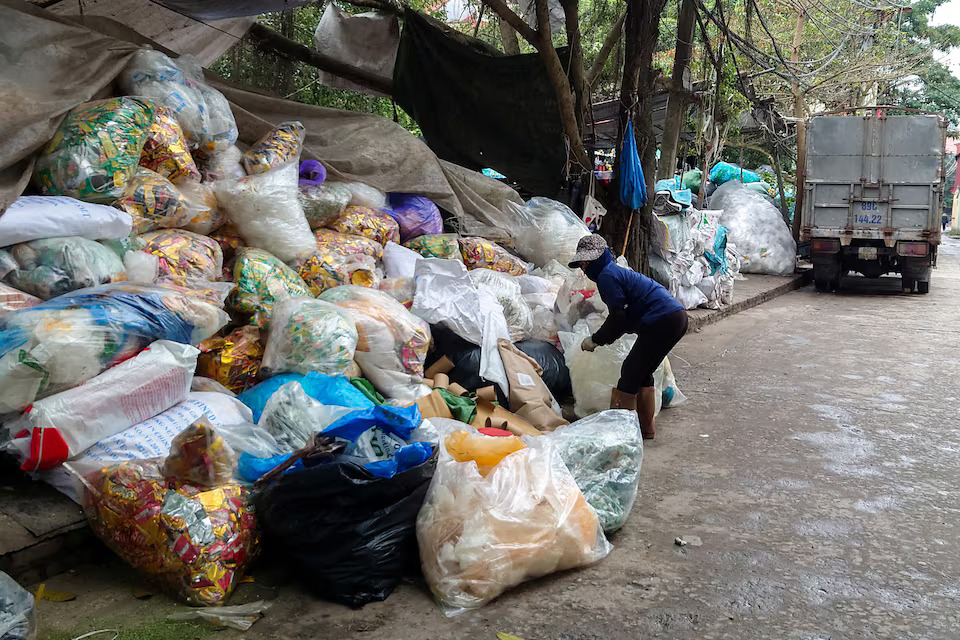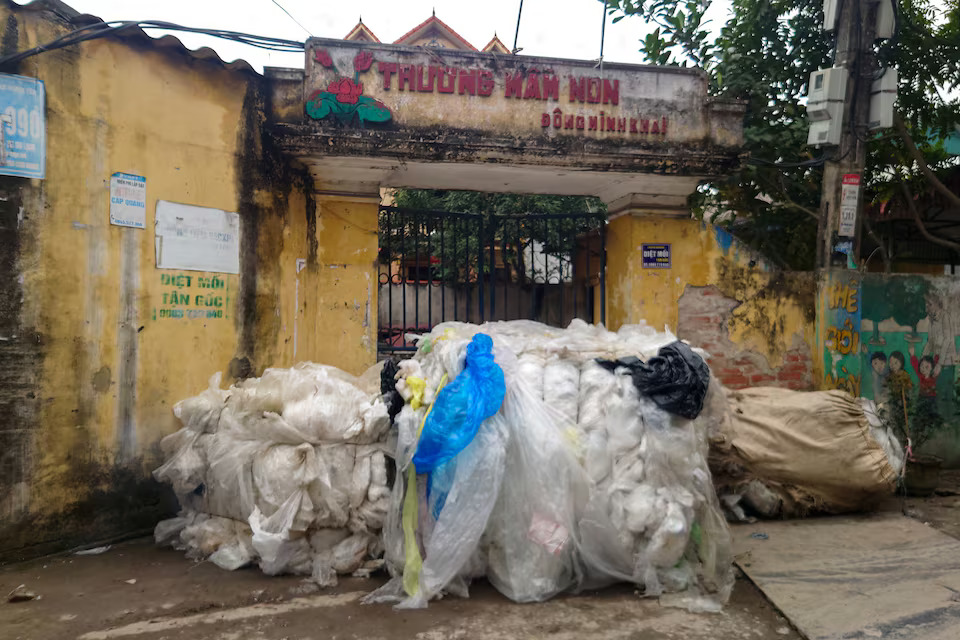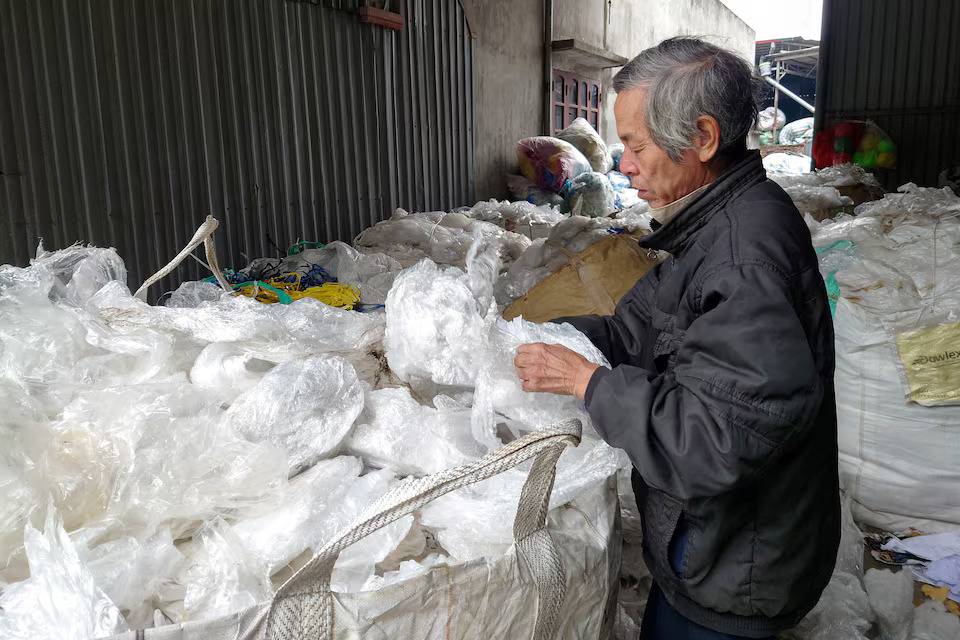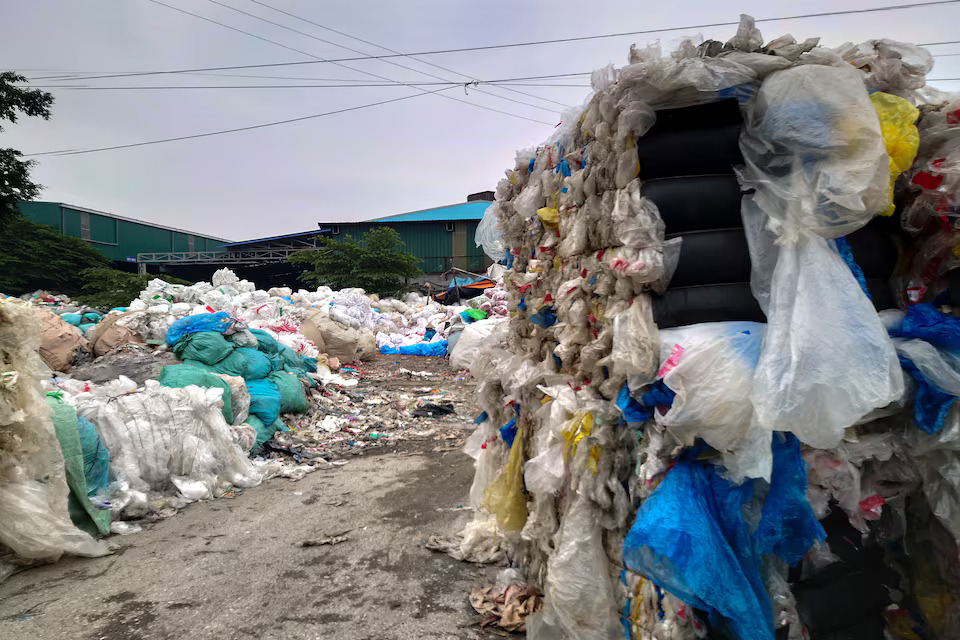Countless discarded bags float on the canal running through Minh Khai village, whose narrow streets are clogged with tall heaps of plastic waste spilling out from villagers' front yards and stacked near furnaces where non-recyclable scrap is burned.
This so-called plastic recycling 'craft village,' an hour's drive from Vietnam's capital Hanoi, is where some of the plastic sorted for recycling in Japan, America and Europe ends up for final treatment.
Delegates at a United Nations summit in South Korea this week are discussing new global rules that could limit that trade, which U.N. data shows was worth $3.8 billion last year. Stricter domestic requirements on waste imports will also be applicable in Vietnam from next year.
The Southeast Asian nation has emerged as a major importer of plastic scrap in recent years after China, once the top player in the industry, banned imports in 2018. Vietnam was the world's fourth-largest importer in 2022, according to the Organization for Economic Co-operation and Development (OECD).
But that surge in imports has taken place as the country is struggling to recycle even its own plastic waste.
Additional restrictions could reduce the trade but the large size of the domestic informal industry may make it hard to monitor commercial flows and recycling rates, experts and officials said.
|
|
| Plastic waste is placed in front of an abandoned kindergarten at Minh Khai Craft Village in Hung Yen Province, Vietnam, February 26, 2024. Photo: Reuters |
From sorting to landfills
More than one quarter of Vietnam's plastic recycling capacity is concentrated in craft villages like Minh Khai, the World Bank said in a 2021 report, noting that spare capacity to process imported plastic amounted to 300,000 metric tons.
That was well short of the 420,000 metric tons of plastic scrap Vietnam imported last year, which was up 11 percent from 2022, according to U.N. data, which does not capture the entire volume.
Vietnam's environment ministry did not reply to requests for updated figures.
Researchers have found that recycling is being hampered by the inability to properly sort plastic waste, both offshore and in Vietnam. Only 30 percent of plastic waste generated in Vietnam is sorted, said a government-backed WWF report in 2023.
|
|
| A man sorts plastic waste at Minh Khai Craft Village in Hung Yen Province, Vietnam, February 26, 2024. Photo: Reuters |
As a result, in spite of shipment costs, Vietnam's recyclers rely on higher-quality foreign plastic scrap, according to FiinGroup, a research firm.
But estimates suggest Vietnam recycles only up to one-third of the imported plastic waste, said a research paper published in January.
That is partly because some imported plastic is often mixed with organic waste that makes it hard or impossible to treat, said one of the paper's authors, Kaustubh Thapa, from the Netherlands' Utrecht University.
|
|
| A general view of plastic waste at a recycling facility, in Minh Khai Craft Village, Hung Yen Province, Vietnam, February 26, 2024. Photo: Reuters |
A recycler at Minh Khai village was more upbeat. "The amount of imported waste that can't be recycled is often about 5 percent of the volume, but at times it goes up to 25 percent," said Chi, who declined to give his full name.
Most people contacted in the village in person or by phone declined to talk to media for fear of repercussions on their activities.
Much of the unrecycled plastic is dumped in 'unsanitary' landfills, and about 15 percent of that is directly released into the environment and the oceans, the WWF report said.
"Exporting waste for recycling to destinations without sound recycling capacity raises questions of fairness and sustainability," concluded the research paper by Thapa and co-authors.





















































